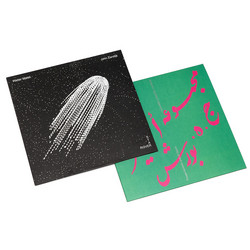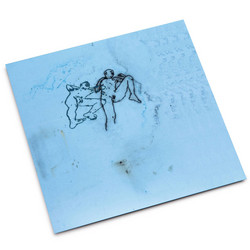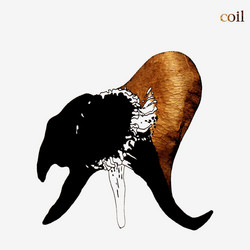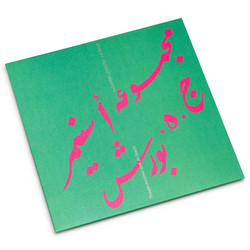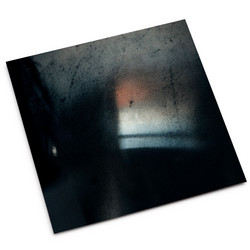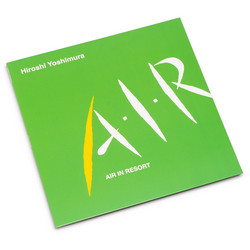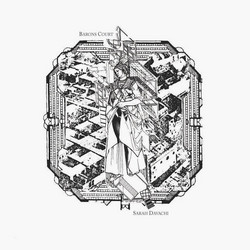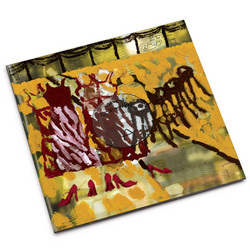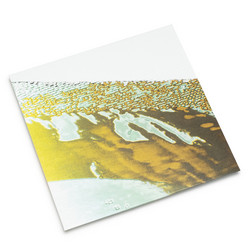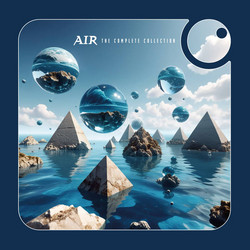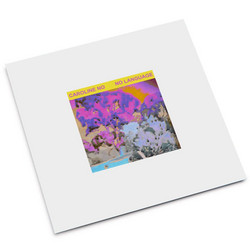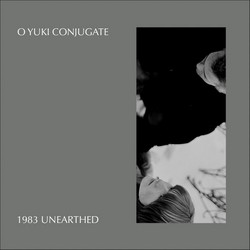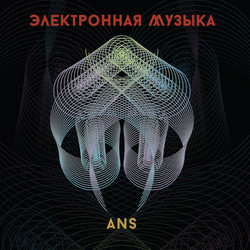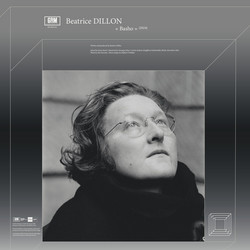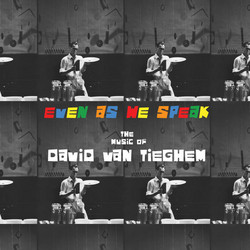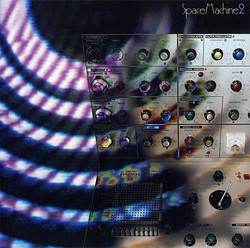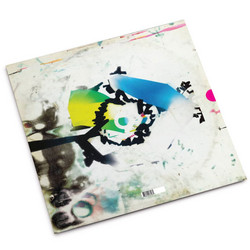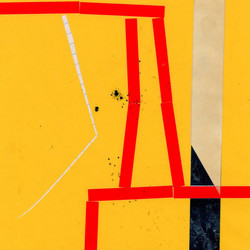1
2
3
A multi-platform production that explores the overlap between the digital and the organic through field recordings of Inuit throat singing may sound, on surface level, to be something that is a rather niche. However, Zoe Mc Pherson’s exploration of this world on String Figures is a deeply rhythmic, immersive and forward-thinking piece of electronic-leaning music that remains just as danceable as it does experimental. The album is fundamentally one of duality, exploring the traditional and the contemporary, organic and electronic, audio and visual, history and the future. Rooted in this duality is also a core theme around string being one of the most ancient and playful art forms and the seemingly infinite possibilities it offers in terms of shapes, structures and figures lines up with this as a trans-global art project. One that over time will involve video art, choreography, 3D motion design, macro film, instrumental and electronic sound. Although for now is being presented through an AV performance, films and a record with Mc Pherson collaborating with director Alessandra Leone.
Over the seven tracks (which are laid out as chapters) the record explores glitchy electronics, dub-tinged grooves, polyrhythms, and a huge array of instruments that takes in quiet blasts of atonal sax alongside wonky synths. This of course cross-pollinates with the throat singing and experimental field recordings to create an utterly inimitable sonic sphere. For Mc Pherson it’s about mixing worlds, histories and timeframes and she uses a 1991 quote from Laurie Spiegel to hit home how she has elaborated upon this original thought of history and future overlapping. “Folk music is considered anonymous common property in a culture and that’s what a lot of computer music and other kinds of music data may end up becoming.” However, there’s also a purer reason for the exploration of these worlds and colliding them together. “Basically I thought that electronic music that is only digital is a bit boring and as I’m connected to jazz music for many reasons, I wanted it to sound organic: real instrumentation, field recordings.”
Said field recordings took Mc Pherson to a variety of places and these were the initial impetus for the record. “The first step is being a weirdo with a mobile recorder, hunting interesting sounds,” she says. Such interesting sounds incorporate horses hooves in Turkey or the sound of bees in France. “I think Indonesia was funny because in some places it was hard to record as there’s so many people and traffic, and yet in other places it was forbidden to enter the room where the gongs where. It’s fun to have to deal with whatever is happening but those animals there are so incredibly loud, the smallest little animal there is just a giant noise. It’s pretty surprising”. Mc Pherson even stretched timeframes and countries that she couldn’t make it to physically herself to include on the record, utilising some pre-existing field recordings from Greenland and also using some throat recordings that stretch back to the 1950s, on top of the original ones that were recorded in Belgium.
After the initial field recordings are completed the record is then constructed in parts, as Mc Pherson explains. “I edit, add beats, synths, vox etc and then present some of the tracks to Falk, the percussionist with whom I work, who adds some grooves. He learned rhythms while living in Brazil and visiting Benin. We jam and that’s great, I like being two rather than always alone.
We jammed a lot on track ‘Deep’, it’s our favourite track because we’re really together and absolutely free with the track’s dynamics.”
Mc Pherson describes the end result of the album less in terms of genre but more in elemental terms, ones rooted in the make-up of the album’s production. “The constant shifting of the rhythm within the music opens up space times, where otherworldly liminal possibilities occur, “ she says, “The way we focus from one to another is almost disturbing yet powerful since it is movement. Textures evolve and engage in a dialogue as if they were creatures stranded or suspended in an unknown space”.
It is also both an exploration of, and love letter to, Inuit music. It’s about, Mc Pherson says, “So that their culture shall never be lost. I’m referring to some cultures that have been spoiled, from the middle ages’ crusades to the oriental world to the story of Native Americans, indigenous people. But it’s also about how that culture evolves as it gets passed on and embraces modernity.”
Modernity is something at the real core of this project. Whilst Mc Pherson’s director, Leone, describes the project as, “A collage of experimental vignettes and recurring motifs, glued together by the lead character and the micro-macro visual structure / narrative potential of String Figures.” It also succeeds on a physical, primal level of being an unshakeably innovative and leftfield piece of contemporary music.
Over the seven tracks (which are laid out as chapters) the record explores glitchy electronics, dub-tinged grooves, polyrhythms, and a huge array of instruments that takes in quiet blasts of atonal sax alongside wonky synths. This of course cross-pollinates with the throat singing and experimental field recordings to create an utterly inimitable sonic sphere. For Mc Pherson it’s about mixing worlds, histories and timeframes and she uses a 1991 quote from Laurie Spiegel to hit home how she has elaborated upon this original thought of history and future overlapping. “Folk music is considered anonymous common property in a culture and that’s what a lot of computer music and other kinds of music data may end up becoming.” However, there’s also a purer reason for the exploration of these worlds and colliding them together. “Basically I thought that electronic music that is only digital is a bit boring and as I’m connected to jazz music for many reasons, I wanted it to sound organic: real instrumentation, field recordings.”
Said field recordings took Mc Pherson to a variety of places and these were the initial impetus for the record. “The first step is being a weirdo with a mobile recorder, hunting interesting sounds,” she says. Such interesting sounds incorporate horses hooves in Turkey or the sound of bees in France. “I think Indonesia was funny because in some places it was hard to record as there’s so many people and traffic, and yet in other places it was forbidden to enter the room where the gongs where. It’s fun to have to deal with whatever is happening but those animals there are so incredibly loud, the smallest little animal there is just a giant noise. It’s pretty surprising”. Mc Pherson even stretched timeframes and countries that she couldn’t make it to physically herself to include on the record, utilising some pre-existing field recordings from Greenland and also using some throat recordings that stretch back to the 1950s, on top of the original ones that were recorded in Belgium.
After the initial field recordings are completed the record is then constructed in parts, as Mc Pherson explains. “I edit, add beats, synths, vox etc and then present some of the tracks to Falk, the percussionist with whom I work, who adds some grooves. He learned rhythms while living in Brazil and visiting Benin. We jam and that’s great, I like being two rather than always alone.
We jammed a lot on track ‘Deep’, it’s our favourite track because we’re really together and absolutely free with the track’s dynamics.”
Mc Pherson describes the end result of the album less in terms of genre but more in elemental terms, ones rooted in the make-up of the album’s production. “The constant shifting of the rhythm within the music opens up space times, where otherworldly liminal possibilities occur, “ she says, “The way we focus from one to another is almost disturbing yet powerful since it is movement. Textures evolve and engage in a dialogue as if they were creatures stranded or suspended in an unknown space”.
It is also both an exploration of, and love letter to, Inuit music. It’s about, Mc Pherson says, “So that their culture shall never be lost. I’m referring to some cultures that have been spoiled, from the middle ages’ crusades to the oriental world to the story of Native Americans, indigenous people. But it’s also about how that culture evolves as it gets passed on and embraces modernity.”
Modernity is something at the real core of this project. Whilst Mc Pherson’s director, Leone, describes the project as, “A collage of experimental vignettes and recurring motifs, glued together by the lead character and the micro-macro visual structure / narrative potential of String Figures.” It also succeeds on a physical, primal level of being an unshakeably innovative and leftfield piece of contemporary music.
Details
Cat. number: SF01
Year: 2018
